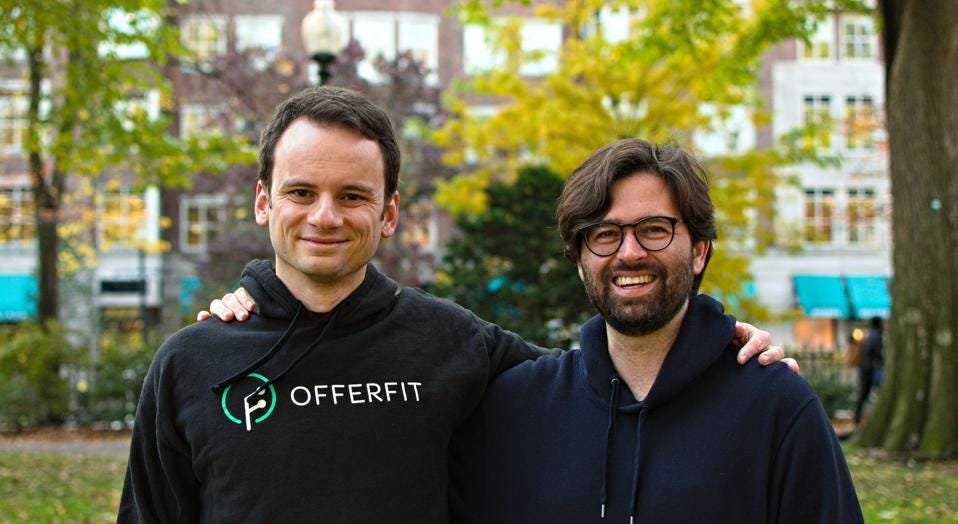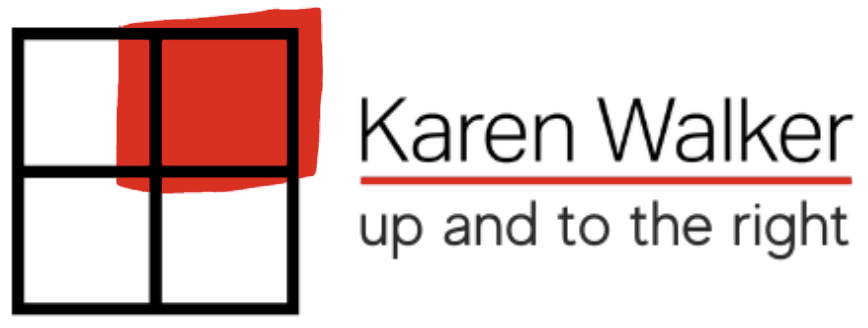
OfferFit, a marketing technology firm focused on personalizing multi-channel communications by replacing A/B testing with self-learning AI, has just received a $14M Series A. The round is being led by Canvas Ventures, with participation from Alumni Ventures Group, Carbide Ventures and angel investors Jeremy Stoppelman and David Edelman.
I spoke with founders George Khachatryan (CEO) and Victor Kostyuk (CTO) about their breakthrough idea and partnership with Canvas.
This interview has been condensed and edited for clarity.
Karen Walker: Congratulations on your Series A and the investors that you chose. Victor, how did OfferFit come to be?
Victor Kostyuk: Before starting OfferFit, I worked as a data science consultant at Boston Consulting Group. Many of my clients wanted to personalize communications incentives for their customers. The traditional way to do that is to look at historical data. You create and train a model that says this thing has been done for specific customers and worked well. Therefore, the probability that a similar customer would take a similar offer is x%
The problem is that the historical data on which these models are based are quite limited. The data is usually based on one thing without much variety.
I started experimenting with a new approach to AI, so-called reinforcement learning, or self-learning. It has been used quite successfully in areas of game play, where you want to learn by experimenting — by trying something, seeing how it works, and doing more of it. It’s very different from the typical machine learning AI approach.
I thought we could build a product around it, a product that would be a usable and attractive value proposition for marketers and customer loyalty professionals around many companies and many industries.
Walker: Victor, when and how did that idea come to you? Was it a lightning bolt, or was it something that you thought of over time?
Kostyuk: I think it was over time. I started reading some articles about AlphaGo and how this approach to reinforcement learning was making incredible breakthroughs in previously complex domains like the games of Go, chess and others. I saw that this had applications outside of the game domain, but there were difficulties associated with broadening the application.
Walker: George, maybe you could talk about the founding story. Your friend Victor has this idea, and he talks to you. What happened next?
George Khachatryan: We knew we wanted to start a company together for years before launching OfferFit. But we also know that we needed to be very strategic about the idea, and it needed to be something that was solid, with genuine demand for it in the market.
So, anytime we had an idea, we would talk to potential customers and ask them to be honest in their feedback. When we spoke to marketers, it became clear after just a few conversations that there was a need, and nothing that they had at that point filled that need.
Walker: Once the idea was validated, you two decided that you wanted to build a company. Then what happened?
Khachatryan: The most important thing early on is having a customer using the product. We were fortunate enough to get two excellent companies to work with us before we demonstrated any results. One was Brinks Home, the leading home security company, and the other was Engie, one of the world’s largest electric utilities with $60 billion in revenue.
Walker: How did you land Brinks? Were they so enamored with the idea that they said, “Yes, we’ll do what it takes to be your proof of concept?”
Khachatryan: I knew people at Brinks from earlier in my career, but just because they knew me didn’t mean they were going to pilot this product. The magical moment came when we started chatting with the people that were involved in the actual manual A/B testing because that’s the pain that we solve.
For people who are doing this A/B testing hands-on, it is difficult and time- consuming, and often produces inconclusive results. It’s frustrating.
Walker: You’re not just giving them a way to get better results, but you’re also solving this pain point that they have around the work they’re doing.
Khachatryan: Exactly. It’s hard to get people excited about something new if your value proposition is just better results. But if the value proposition is better results and makes things more convenient and saves you time, people will listen.
Walker: Victor, why did you choose the investors that you chose? Because money comes with strings. You want to make sure you know what they are and that you choose the caveats that work best for your company.
Kostyuk: A friend introduced us to Canvas. We had several conversations, and they seemed to understand both our product and our approach.
Walker: George, is this resonating for you?
Khachatryan: Yes, and I’d add that Canvas moved very rapidly and efficiently through the due diligence process. We like to move very, very quickly and efficiently. Seeing them move at the same pace suggested it was going to be a good fit. Also, our due diligence on Mike Ghaffary, the general partner who’s now on our board, indicated that he was a true partner to other founders.
Walker: I’m curious if there was a moment when you knew that this company would be moving up and to the right, that spot in the upper right- hand quadrant of a 2×2 matrix where we always want to be. George?
Khachatryan: Yes, when the performance results came in for Brinks. We thought the product would be helpful, but to see the actual lift against a control group confirmed it. When we launched the pilot, we expected it would take two or three months to see results. Victor managed my expectations – telling me not to be surprised if we only saw a couple of percentage points.
Then a week and a half into the trial, the results started coming in, and we were already seeing a 30 or 40% improvement in bottom-line performance of the campaign. We didn’t believe it. We waited another week, and triple-checked. It turned out that the data was right. Since then, the AI has continued learning and getting better. And the results are now at 300% improvement versus the control. And at Engie they’ve also seen a 26% bottom-line improvement – anything more than 5% is enormous.
Then I knew that we were delivering tangible, quantifiable business value to these companies. And that we would be going up and to the right.
Walker: Victor, your moment?
Kostyuk: For me, the moment came when I was on some of the early introductory and sales calls. Previously, George and I worked at an education technology company where we sold software to schools. It was often like pulling teeth to convince some administrator at the district or school level that this was a program that helped their kids. But here, there was a natural, tangible pull from marketers, chief marketing officers and customer loyalty professionals. They were interested, engaged, and wanted to pilot this for themselves.
Walker: Where to from here, George?
Khachatryan: Right now, we’re very focused on loyalty marketing. Still, more broadly, this idea of automated AI-driven experimentation is something that every single large company in the world needs. Today there’s not a good solution except costly custom builds, which are not practical, except for the biggest companies for their two or three most important uses. Any big company has dozens of uses for this technology.
That’s also why we’re so excited about this funding round. We’re building a portal that allows customers to directly do configurations and further automate the process of setting up.
By giving even more control to our customers, we’ll be that much more scalable.
